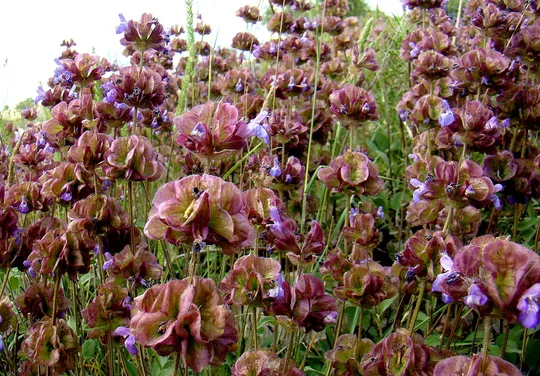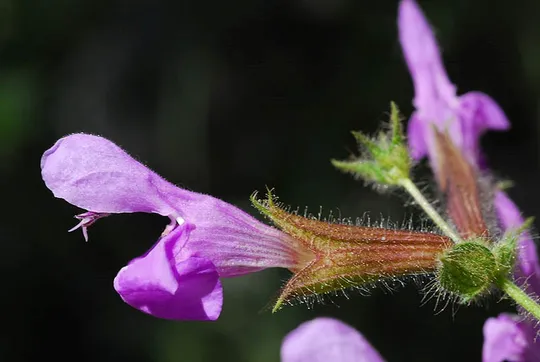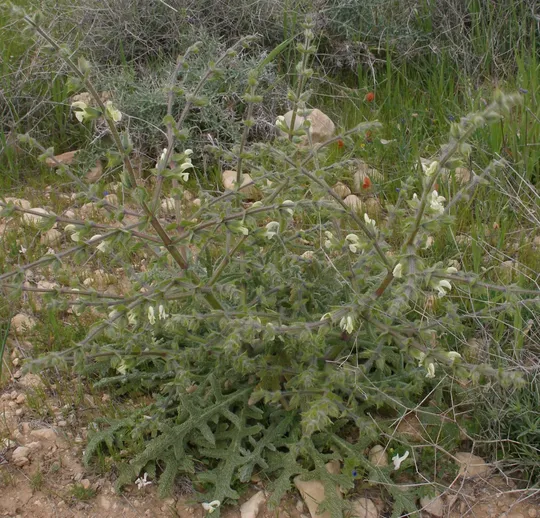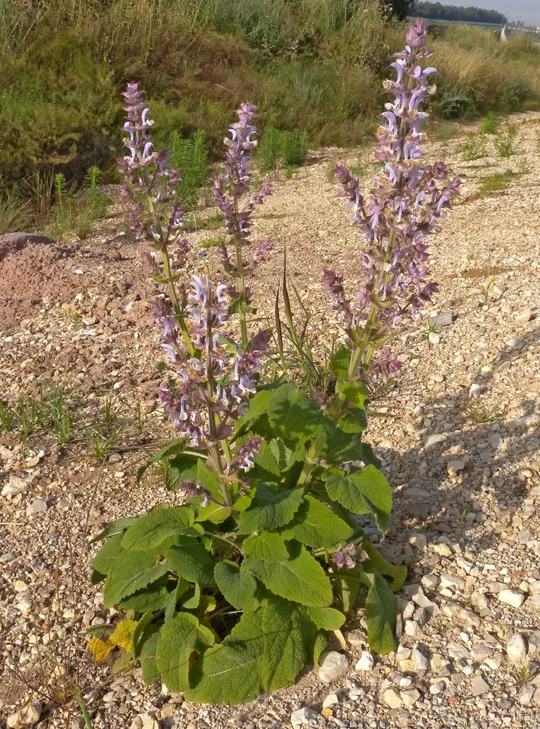Eig's Sage
Salvia eigii
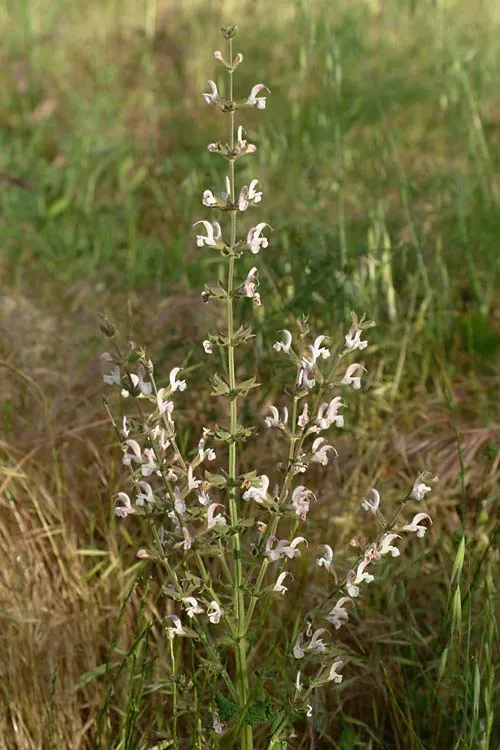
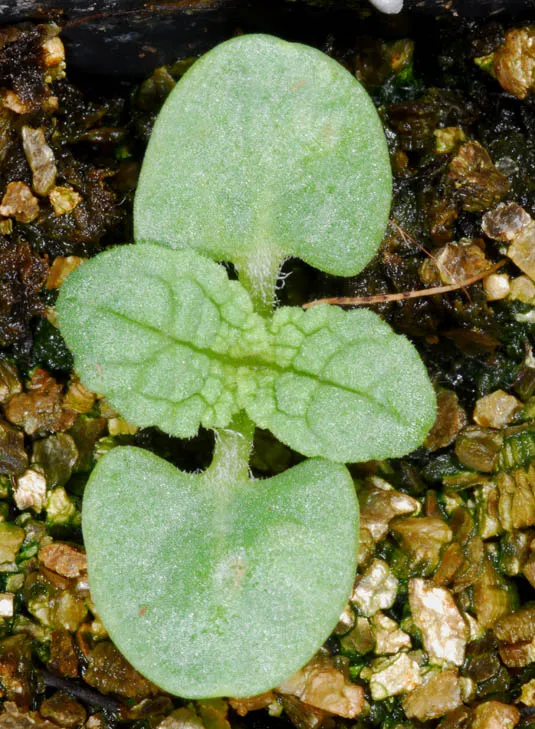
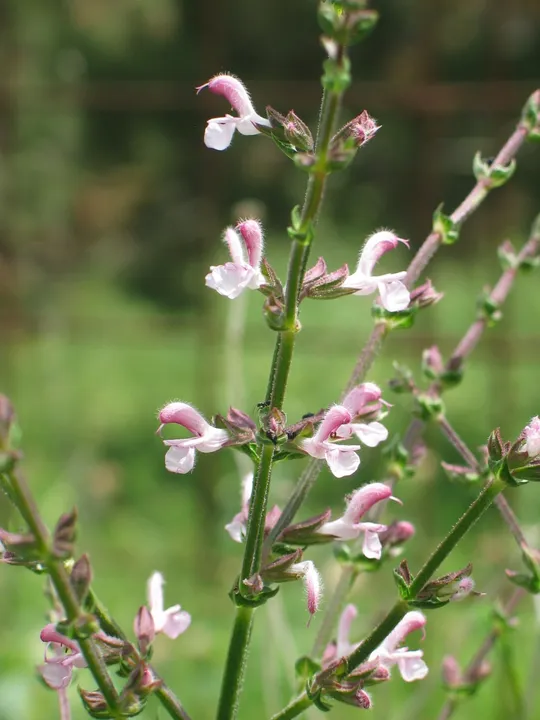
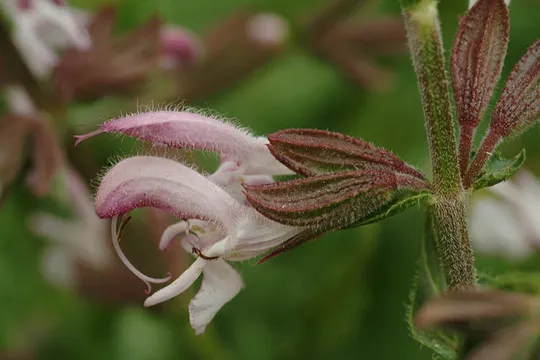
Salvia eigii was
used as an ornamental plant in America and appears in Betsy Clebsch's famous
book on ornamental Salvias (Clebsch, 2003). The species is also successfully
grown in the Botanical Garden at Givat Ram and it turns out that the plants flourish
under a Mediterranean irrigation regime (dry summers), but also enjoy slight summer
irrigation and under these conditions flower twice a year.
Salvia eigii grows in five
regions in Israel: the Lower Galilee, Carmel, Jezreel Valley, Southern Golan
Heights and Pleshet, at 11 sites, although probably only 10 sites remain. Most of
the sites are located in the Lower Galilee, in the Yavne’el ridge-Kfar Kama section
and in the Golani Junction area. On the Carmel, it is found only at Ramat HaNadiv,
where a relatively large population of more than 100 plants exists (Schwartz-Tzahor, pers. comm.). In the Jezreel Valley,
it remains only in the Sarid area and disappeared from Balfourya, Kfar
Yehezkel, Gvat and Nahalal. In the southern Golan Heights it was found by Ofer
Cohen in November 1992 in Ahu Nov, as a new species for the region. In Pleshet,
S. eigii survived west of Kiryat Gat as
an isolated population, which is the most southern location for the species in Israel,
but has disappeared from Gedera and Be’er Tuvia. S. eigii is extinct in the Sharon region, where it was collected in the vicinity
of the Alexander Stream in 1952 by Gideon Orshansky (Orshan).
Deep heavy soils
with herbaceous vegetation. Salvia eigii has survived mainly on traditionally cultivated
agriculture fields, abandoned fields and in eucalyptus groves in the valleys. At
Ramat HaNadiv it is found in planted pine and cypress groves.
It has also been found several times on rocky areas at field edges.
Salvia eigii is similar and close to S. hierosolymitana. S. hierosolymitana grows in rocky habitats throughout
the Mediterranean region. It is found in scrubland, garrigue and native
woodland edges, but not in deep soils and has a characteristic glandular
corolla and calyx and a sticky inflorescence.
S.eigii may possibly be a variety or ecotype of S.hierosolymitana characteristic of deep soils, but to
date no transition forms between the two taxa have been found. There is need of
research accompanied by molecular analysis to examine whether and to what
extent these taxa hybridize. The results of such research can either support or
reject the unification of the taxa into a single species.
·
The number of regions in which Salvia eigii is found has decreased
from six to five. In the regions where it survived the number of sites
decreased to one third of what was previously known. Most of the local
extinctions were from the Jezreel Valley and Pleshet.
·
The S. eigii populations are usually small; plants
appear either as individuals, a few dozens, or rarely as a few hundred.
·
Many of the habitats in fields and
fallow fields with deep heavy soils are disappearing due to the transition to
modern agricultural methods leading to the extinction of S. eigii populations, as well
as other plants characteristic of this habitat.
·
Salvia eigii is protected in
the Mount Yavne’el and Mitspe Alot reserves in the Lower Galilee
and in the Ahu Nov Reserve in the southern Golan Heights. It is also protected as
part of the Ramat HaNadiv Nature Park management program (Schwartz-Tzahor, pers. comm.).
·
The plant is endemic to Israel and its
local threat status is equivalent to its global threat.
Salvia eigii should be used
for gardening in light of the experience gained in the Givat Ram Botanical
Garden and in the world, to create a large reservoir of plants and seeds. The
plant germinates without difficulty; the seedlings become established easily
and blooms as early as the second year after being planted.
Salvia eigii is endemic to Israel.
Salvia eigii is a perennial herbaceous plant of heavy and deep soil in
fallow fields and traditionally cultivated areas. It is endemic to Israel,
extremely rare and the number of its sites is declining. The decrease in the
number of suitable habitats, poses a major threat to the populations. The plant
has a good potential for acclimatization and gardening.
Clebsch, B. 2003. The New Book of Salvias. Timber Press. pp. 113-114.
Current Occupancy Map
| 1000 squre meter pixel | 5000 squre meter pixel | 10000 squre meter pixel | |
|---|---|---|---|
| number of observations | 0 | 0 | 0 |
| in total pixels | 0 | 0 | 0 |
| Family | Lamiaceae |
| Classification | On the endangered species list |
| Ecosystem | Mediterranean |
| Chorotype | Eastern Mediterranean |
| Conservation Site | Mount Yavne’el, Ramat HaNadiv, Golani Junction |
| Rarity |
1
3
6
|
|---|---|
| Vulnerability |
0
2
4
|
| Attractiveness |
0
2
4
|
| Endemism |
0
4
4
|
| Red number |
1
5.8
10
|
| Peripherality | 0 |
| IUCN category | DD EW EX LC CR EN VU NT |
| Threat Definition according to the red book | Critically endangered |
 Based on:
Based on:
